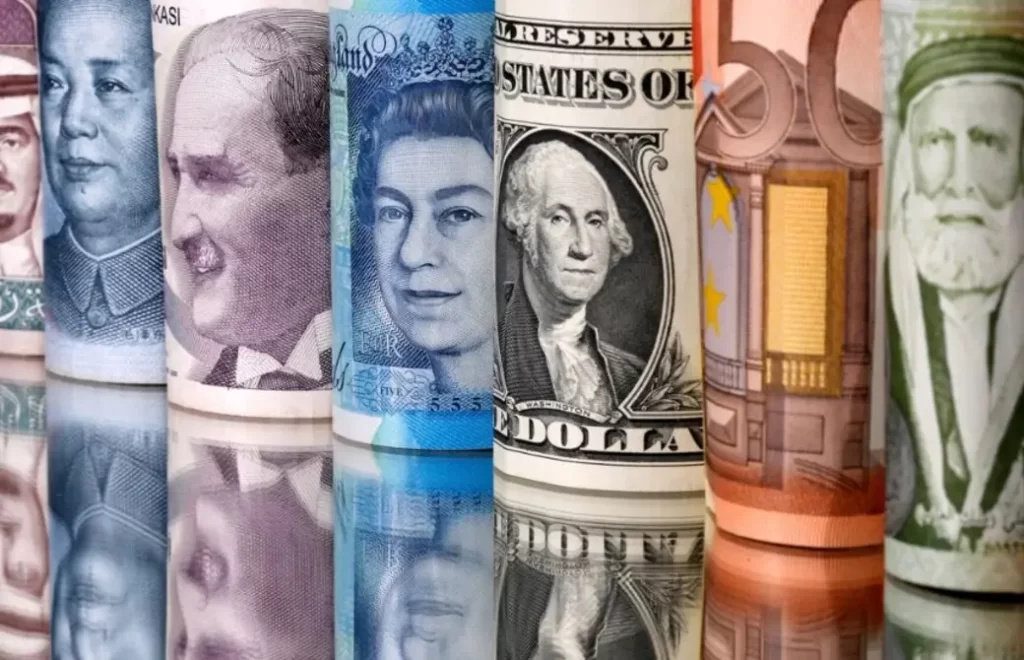BRICS: 8 Strongest Currencies That Rule the World

April 7, 2025 — In a world increasingly defined by shifting geopolitical power and economic alliances, the BRICS coalition—originally composed of Brazil, Russia, India, China, and South Africa—has grown both in influence and in number. With the inclusion of new member nations like Egypt, Iran, the United Arab Emirates, and Ethiopia, the bloc now represents a formidable challenge to the Western-dominated financial order.
While the U.S. dollar and euro still dominate global trade and reserves, BRICS countries have been steadily pushing for a multipolar currency landscape. In this evolving scenario, several BRICS member currencies have gained prominence—either through trade dominance, foreign reserves, or sheer economic muscle.
Here are the 8 strongest currencies currently shaping the future of the BRICS alliance:
1. Chinese Yuan (CNY)
As the second-largest economy in the world, China has aggressively pushed for the internationalization of the yuan. Through initiatives like the Belt and Road, yuan-based oil trading with Saudi Arabia, and the establishment of the Cross-Border Interbank Payment System (CIPS), the yuan is increasingly seen as an alternative to the dollar in Asia and Africa.
2. Russian Ruble (RUB)
Sanctions following the Ukraine conflict forced Russia to decouple from Western financial systems, prompting a Ruble resurgence. Backed by vast natural resources, particularly in energy, Russia now trades in rubles with China, India, and other BRICS partners—significantly reducing dollar dependency.
3. Indian Rupee (INR)
India, the world’s most populous nation, has rapidly expanded its economic footprint. With strategic trade agreements and currency swap deals in the Global South, the rupee is gaining favor in cross-border transactions, particularly in Africa and Southeast Asia.
4. Brazilian Real (BRL)
Latin America’s largest economy plays a pivotal role in BRICS agricultural and energy exports. Brazil has increasingly settled trade deals in reals—particularly with China, its largest trading partner—signaling a shift toward de-dollarization in South America.
5. South African Rand (ZAR)
As the African continent’s most advanced economy, South Africa is a gateway for BRICS investment across the region. The rand's relative stability and liquidity in African markets make it a valuable tool in regional trade blocs and infrastructure projects.
Read This : Cetoex Made Easy 8-Step Guide to Buying Crypto.
6. UAE Dirham (AED)
Since joining BRICS in 2024, the UAE has become a financial bridge between East and West. With Dubai emerging as a major hub for BRICS banking, trade, and fintech, the dirham is being used in increasing volumes for energy transactions, particularly in petro-yuan deals.
7. Iranian Rial (IRR)
Despite being under U.S. sanctions, Iran’s inclusion in BRICS has revived the rial’s relevance, especially in oil-for-goods trade mechanisms with China, Russia, and India. The rial is now part of a growing trend of non-dollar oil trade in the Middle East.
8. Egyptian Pound (EGP)
A key logistics and trade player due to the Suez Canal, Egypt's strategic geography makes the pound a rising star in regional trade. Integration with BRICS-led financial platforms has begun to strengthen the pound’s role in North African commerce.
Toward a BRICS Common Currency?
The idea of a BRICS common currency, often dubbed the "BRICS Coin" or “R5” (symbolizing the initials of member currencies), remains under discussion. If implemented, it could dramatically reshape global trade by offering an alternative reserve currency to the dollar and euro.
For now, the bloc's strength lies in its diversification. These eight currencies, though vastly different in value and liquidity, represent a growing shift in how global trade, investment, and influence are being redistributed in a multipolar world.
As BRICS continues to expand its membership and challenge the dominance of Western institutions, its strongest currencies may soon become as influential as their Western counterparts in shaping the future of global finance.
Do Follow Us On Social Media And Keep Reading And Become Our Members




